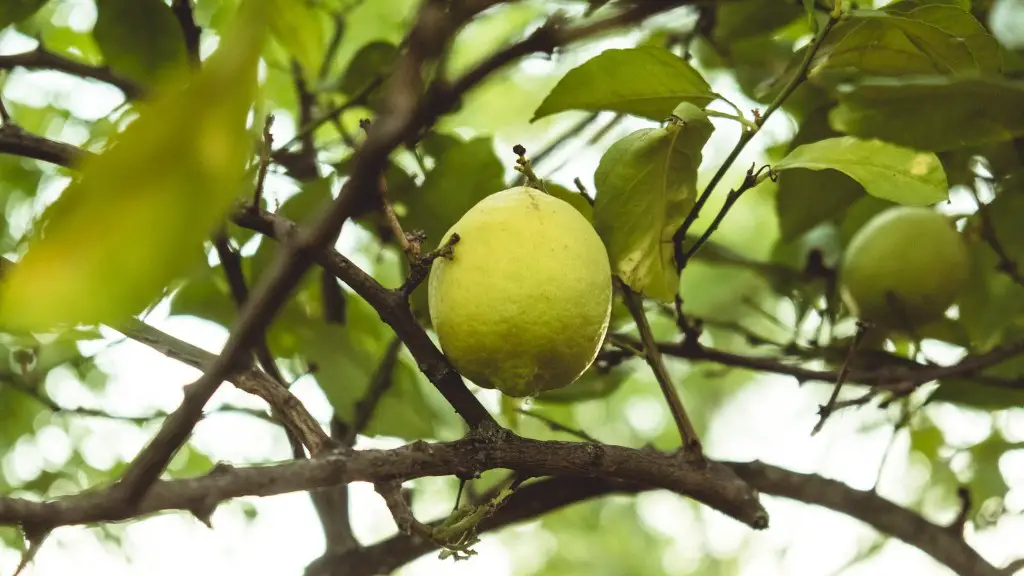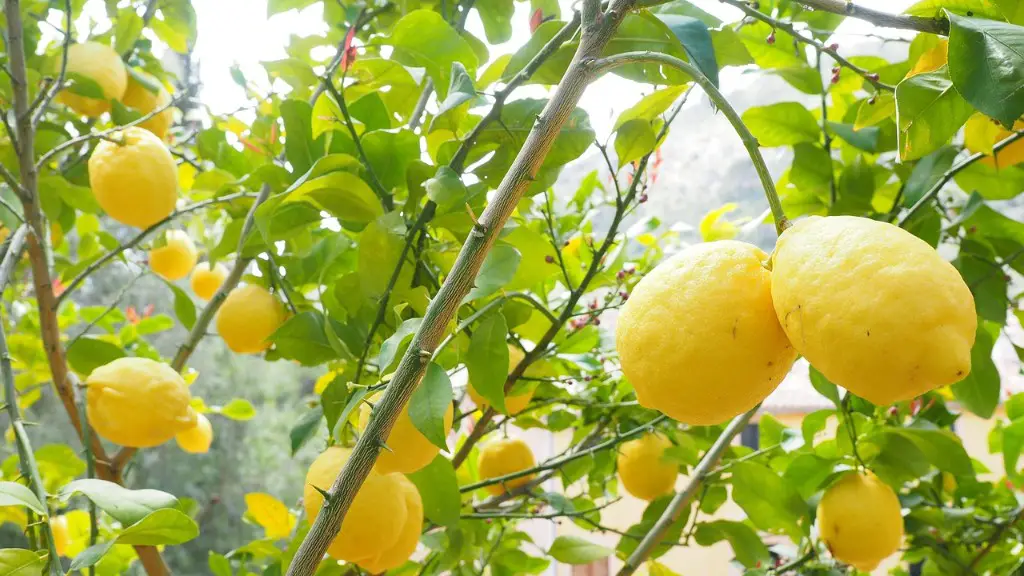Growing a lemon tree definitely pays off, as lemons are packed full of essential vitamins and minerals, from vitamin C to potassium and magnesium. The great news is that, depending on the variety, a lemon tree can bear fruit anywhere from 12 months to four lengthy years from when you plant it. Overall, the growing and fruiting time for a lemon tree varies anywhere from one to four years, often depending on the variety of tree you have.
In its first year, your lemon tree will likely have flowers and it’ll achieve a height of around two or three feet tall. You should also begin to see some lemons on it! This growth corresponds to the right conditions: a warm, well-lit spot, regular watering, and frequent fertilizing.
By its third season, your lemon tree should be relatively mature. The abundance of mature foliage will mean it’s probably three to five feet tall and the aforementioned factors will help you harvest numerous lemons. However, given that the tree takes this long to bear fruit, the good news is that you will be able to harvest ripe lemons year ’round depending on the persisting season.
Keep in mind that if you live in a cooler climate, it’ll take a lemon tree even longer to start bearing fruit. If you have citrus that dies back in cold weather, expect it to take up to five years for the fruits to appear. But as long as you’re consistent in taking care of your tree and providing it with enough warmth, you should have no problem harvesting some beautiful lemons.
If you’re living in a cold climate, the best recommendation is the Meyer lemon tree. This tree thrives in the cooler weather so it won’t take long to bear fruits. Most experts agree that this variety can take only up to a year before you can start picking your crop, which is relatively faster than other varieties.
Moreover, patience is also a virtue. Don’t expect quick results in growing a lemon tree. You won’t get to enjoy the fruits of your hard work overnight. It usually takes a few years before you can start harvesting lemons. That said, it is a worthwhile investment as you can reap many rewards out of this tree in the long run.
Care Tips
In order to get the best harvest from your lemon tree, you must provide it with enough nutrients. This can include fertilizers, water, and sunlight. Aside from these needs, pruning and thinning your tree, when necessary, will also help it grow better fruit. This pruning should be done once a year, depending on the variety and the climate you live in. Trimming off the dead leaves and stems protects against weak parts and diseases, and it’ll also help the tree focus its energy into producing better fruit.
Make sure to keep an eye out for any pests or diseases. If you’re seeing minor pest activity, try manual removal and organic sprays before turning to synthetic ones. If you let the pest activity go unattended, then it might be difficult to yield a good harvest later in the season.
Irrigation is also important to keep the soil moist during dry spells. Regular watering is necessary during the initial growth stages and throughout the blooming cycle. This will provide your tree with the necessary water to produce healthy fruit.
Don’t forget to check the leaves of your tree for nutrient deficiencies. Lemon leaves that are lax and have yellow spots could mean your tree is lacking essential nutrients. Consider supplementing soil with iron and calcium to boost your tree’s health.
Finally, make sure to keep your lemon tree warm. Most lemon trees require temperatures that range between 65 and 85 degrees Fahrenheit. Colder temperatures may affect the quality of your harvest.
Fruit Harvesting
To ensure that you have enough delicious lemons for the season, you should pick them when they are still green and unripe. Unripe lemons will ripen with two or three weeks at room temperature; it may be faster if stored in a paper or cloth bag. As the lemons turn yellow in color, they become ripe and ready to be picked.
When you’re done with harvesting, you may also opt to store some of your lemon crop. If you choose to let them ripen on the tree, make sure that you prune away excess fruits. This will ensure that the remaining fruits have enough room and sunlight to ripen without overcrowding. Once your lemons are fully-ripened, you can store them in the refrigerator or use them right away.
Grafting
If your tree takes an unexpectedly long time to fruit, you may consider grafting it. For example, grafting one variety of tree onto another’s rootstock can help it to produce fruit much sooner. The advantage of this technique is that it allows you to use an existing tree while still getting the varieties of fruits you desire.
When grafting two citrus plants, make sure that you pick varieties with similar cold tolerances. You can also use a technique called artcleft grafting to ensure successful unions. This means that the graft scion is cut into a V-shape and filled with a binding material to make sure that it stays put.
Grafting is a popular fruit-growing technique because it helps to ensure a consistent yield in different climates and conditions. Grafting is also used to propagate varieties of lemons, as some can take a long time to fruit.
Pollination
If you’re finding that your lemon tree isn’t bearing fruits even after the appropriate growth cycle, then the problem might in pollination. Lemon trees are self-fertile, meaning they can pollinate themselves, but they do need the help of bees and other pollinating insects to move their pollen from the anthers (male part) to the stigma (female part) of the flower.
If your area sees a lack of bees, then you’ll need to invest in a mechanical pollinator. This piece of equipment gently vibrates the flowers, promoting the transfer of pollen from one flower to the next. Make sure to do this throughout the day, as pollination depends on the perfect timing.
Hand pollination, or pollinating the flowers using a small paintbrush, is also possible. Carefully transfer the pollen from the anthers, located in the center of the flowers, to the stigma. This is especially helpful during the winter, when pollinators are predominantly absent.
Conclusion
When you’ve invested in a lemon tree, patience is important. It usually takes at least two years before you can start harvesting ripe lemons. But if you’re in a colder region, it could take up to four years. Additionally, proper care like fertilizing and pruning is essential for the best harvest. In order to make sure that your lemon tree bears fruit, supplement your tree with adequate amounts of nutrients, water, and sunlight, as well as pollinators or mechanical pollinators if necessary.




